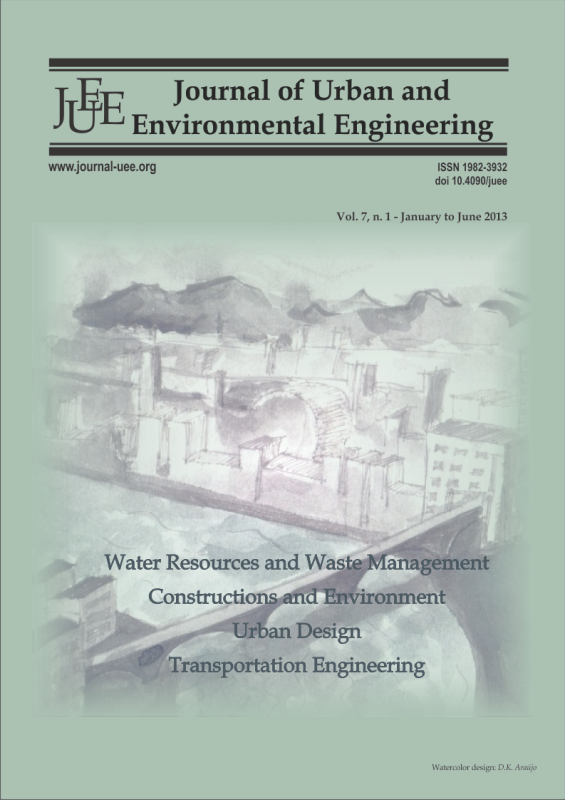URBAN SPRAWL IN SMALL CITIES, ANALYSIS OF THE MUNICIPALITY OF SÃO PEDRO (SP): POTENTIALS AND CONSTRAINS
DOI:
https://doi.org/10.4090/juee.2013.v7n1.64-73Keywords:
Urban Planning, Small Cities, Environmental EngineeringAbstract
Urban sprawl in small cities has led to the occupation of unsuitable areas, resulting in peripheralization and in the occupation of fragile environments. In these occupations, the physical characteristics of the environment are often disrespected. In this context, the present article reports on a case study in the municipality of São Pedro, state of São Paulo, Brazil, which presents and discuss a set of natural factors (geological and geomorphological) conditioning the occurrence of erosion and gravitational mass movements, which are limiting factors for urban sprawl. The methodology employed in this study was based on field work, bibliographic research, and data collection, analysis and GIS-based systematization, which allowed for a spatial reading of the urban sprawl to indicate, from different perspectives, how the phenomenon is manifested. Thus, it was possible to draw up a chart highlighting the areas with the greatest potential for occupation and those with restrictions due to their greater susceptibility to erosion and mass movements. The main identified natural factors of restriction were steepness and soil conditions and law enforced restrictions (environmental protection areas).Downloads
Download data is not yet available.
Downloads
Published
2013-08-16
Issue
Section
Articles




